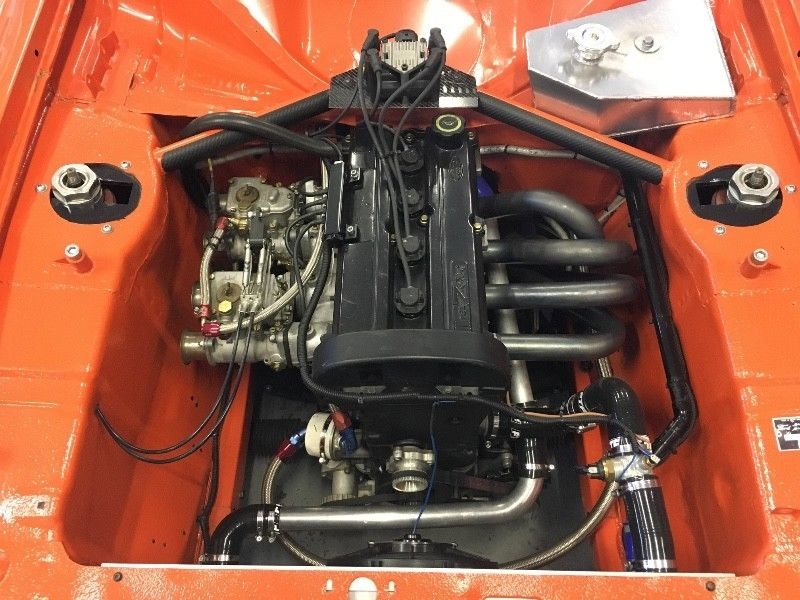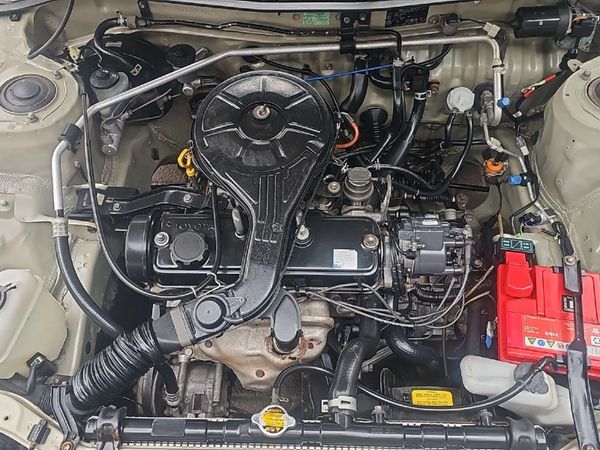Toyota Tazz: A Smart Investment for Those Seeking Low-Cost Maintenance
Toyota Tazz: A Smart Investment for Those Seeking Low-Cost Maintenance
Blog Article
Discover the Most Current Fads in Engine Innovation Via Tazz
In the quickly evolving landscape of auto technology, Tazz stands at the forefront, highlighting significant improvements in engine systems that focus on both development and sustainability. tazz. From crossbreed engines that optimize gas performance to the appearance of hydrogen gas cells, the trends forming contemporary powertrains are not only enhancing performance yet also dealing with important environmental obstacles. As the sector remains to push boundaries, it is necessary to think about how these developments will influence future transportation remedies and the more comprehensive effects for international power usage. What exists ahead in this pivotal transformation?
Crossbreed Engine Innovations
Crossbreed engine developments represent an essential change in automobile innovation, incorporating the benefits of internal burning engines with electrical propulsion systems. This integration not only improves fuel efficiency however additionally reduces emissions, meeting significantly rigorous environmental guidelines. By making use of both power resources, hybrid engines can maximize efficiency, providing power when required while preserving fuel during much less requiring driving conditions.
Recent advancements in crossbreed modern technology consist of renovations in battery efficiency and regenerative stopping systems. These innovations enable for higher energy healing throughout slowdown, which can be rerouted to assist in velocity or power auxiliary systems. Additionally, producers are concentrating on compact designs and light-weight products to take full advantage of the performance of hybrid powertrains.
The growth of plug-in crossbreeds has actually likewise increased the market, enabling motorists to bill their cars making use of standard electric outlets. This function often permits considerable all-electric range, additional lowering dependence on conventional gas. tazz. As the automotive sector continues to develop, hybrid engine innovations are expected to play a vital function in bridging the gap between conventional automobiles and completely electric designs, giving a transitional option that deals with diverse customer needs and choices
Advances in Electric Powertrains
The automotive landscape is rapidly advancing, with electric powertrains becoming a leading pressure in lasting transportation. Breakthroughs in electrical car (EV) innovation are significantly enhancing effectiveness, user, and efficiency experience. Secret innovations include improvements in battery chemistry, which have raised power thickness, decreased billing times, and expanded general battery life.
Solid-state batteries, as an example, assure to change the market by providing higher safety and efficiency compared to traditional lithium-ion cells. Advancements in regenerative stopping systems are allowing lorries to recover power throughout deceleration, adding to total efficiency.
Along with battery innovation, electric motor styles are ending up being extra advanced. Technologies such as integrated electric motors and advanced thermal monitoring systems are helping to enhance power distribution and decrease weight, ultimately enhancing car dynamics.

Jointly, these breakthroughs highlight the commitment to shift towards cleaner, extra efficient transportation solutions, positioning electric powertrains at the forefront of vehicle advancement.
The Rise of Hydrogen Fuel Cells
Significantly, hydrogen gas cells are acquiring grip as a feasible choice to standard inner combustion engines and battery electrical lorries. This innovation takes advantage of the chemical energy stored in hydrogen, converting it right into electrical energy with an electrochemical response with oxygen. The primary result of this procedure is water, making hydrogen gas cells an eco-friendly alternative with zero emissions at the tailpipe.

Automakers are progressively buying hydrogen fuel cell modern technology, acknowledging its possibility for long-range applications and rapid refueling capacities that rival traditional gas. Additionally, markets such as sturdy transport and public transportation are specifically well-suited for hydrogen fuel cells, where battery electrical remedies may fail as a result of weight and range restrictions.
As study and investment continue to broaden, hydrogen gas cells are positioned to play a significant role in the future landscape of clean transport and power remedies.
Enhancements in Internal Combustion Engines
Developments in interior burning engine (ICE) modern technology are changing traditional cars to satisfy contemporary environmental requirements and efficiency assumptions. Among one of the most considerable improvements includes the assimilation of innovative gas shot systems. These systems enhance the air-fuel blend, boosting burning effectiveness and leading to minimized discharges. Straight fuel injection, for example, allows for better atomization of gas, bring about even more full burning and improved power output.
Additionally, turbocharging has actually gotten importance, allowing smaller sized engines to provide higher performance without the weight of bigger engines - tazz. This innovation not only enhances effectiveness but additionally adds to lower gas consumption. Variable shutoff timing systems are likewise being refined, making it possible for engines to adapt to various driving problems for improved torque and responsiveness
In addition, using Go Here light-weight products in engine construction is coming to be common, additional boosting fuel performance by lowering total lorry weight. Engine control units (ECUs) are significantly advanced, allowing real-time adjustments that optimize performance and emissions.
These improvements jointly symbolize a crucial shift in ICE technology, aligning with global sustainability goals while still giving the performance motorists anticipate from their cars. As the sector evolves, these enhancements remain to form the future of traditional automobile design.
Future Fads in Engine Performance
Significant improvements in engine effectiveness are prepared for as manufacturers concentrate on integrating innovative modern technologies to fulfill stringent environmental policies and consumer demands. The shift towards electrification, hybrid systems, and alternative fuels is reshaping the automobile landscape, driving developments that improve fuel economic climate and minimize discharges.
One of the crucial patterns is the application of sophisticated materials and manufacturing techniques. Light-weight compounds and high-strength alloys add to decreased vehicle weight, thus boosting total effectiveness. Furthermore, the adoption of turbocharging and variable shutoff timing modern technologies enables enhanced power output from smaller engines, further boosting fuel economy.

Conclusion
Technologies in crossbreed engine systems, electric powertrains, and hydrogen fuel cells show a commitment to decreasing emissions while boosting efficiency. Enhancements in internal burning engines and a focus on lightweight products contribute to total engine performance.
From hybrid engines that maximize fuel efficiency to the appearance of hydrogen fuel cells, the trends forming modern powertrains are not just enhancing efficiency however likewise dealing with vital ecological challenges.Hybrid engine advancements stand for a critical shift in automotive technology, combining the benefits of interior combustion engines with electrical propulsion systems.In addition, turbocharging has actually gotten prestige, enabling smaller sized engines to deliver higher efficiency without the weight of larger engines. In addition, the adoption of turbocharging and variable valve timing Home Page technologies permits for enhanced power outcome from smaller engines, better enhancing gas economic climate.
Improvements in interior burning engines and an emphasis on lightweight materials add to overall engine effectiveness.
Report this page